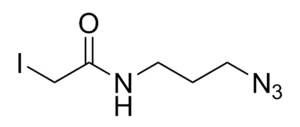Vector Laboratories is closed for the President’s Day on Monday, February 19th. We will be back in the office on Tuesday, February 20th.
We will respond to emails upon our return. Have a wonderful day.
Menu
Vector Laboratories is closed for the President’s Day on Monday, February 19th. We will be back in the office on Tuesday, February 20th.
We will respond to emails upon our return. Have a wonderful day.
Extraordinary strength of the streptavidin-biotin interaction allows for efficient capturing of even highly dilute targets; however, it makes recovery of proteins from affinity resins challenging. Conventional methods to elute biotinylated proteins from immobilized avidin include the following:
These protocols can co-elute contaminant proteins by releasing nonspecifically bound proteins and/or naturally biotinylated proteins concurrently with labeled proteins. In addition, some of these methods can cause elution of high levels of resin-based peptides along with the proteins of interest, resulting in further sample contamination.
Diazo Biotin-Azide probes eliminate a major limitation of the streptavidin-biotin affinity purification. This reagent contains a biotin moiety linked to an azide moiety through a spacer arm containing a cleavable linker. Captured biomolecules can be efficiently released under mild conditions (25 mM sodium dithionite) and the small (178.19 Da) molecular fragment left on the labeled protein following cleavage. These features make the Diazo probe especially attractive for use in biomolecular labeling and proteomic studies.
| Unit Size | 1 mg, 5 mg, 25 mg |
|---|---|
| Molecular weight | 711.83 |
| Molecular weight left behind | 178.19 |
| Chemical composition | C33H45N9O7S |
| CAS | 1339202-33-3 |
| Solubility | DMSO, DMF |
| Appearance | Dark orange solid |
| Storage Conditions | -20°C. |
| Shipping Conditions | Ambient temperature |
Applicable patents and legal notices are available at legal notices.




Stay in the Loop. Join Our Online Community
Together we breakthroughTM

©Vector Laboratories, Inc. 2024 All Rights Reserved.
How do I Request a Quote?
To request a quote for products: